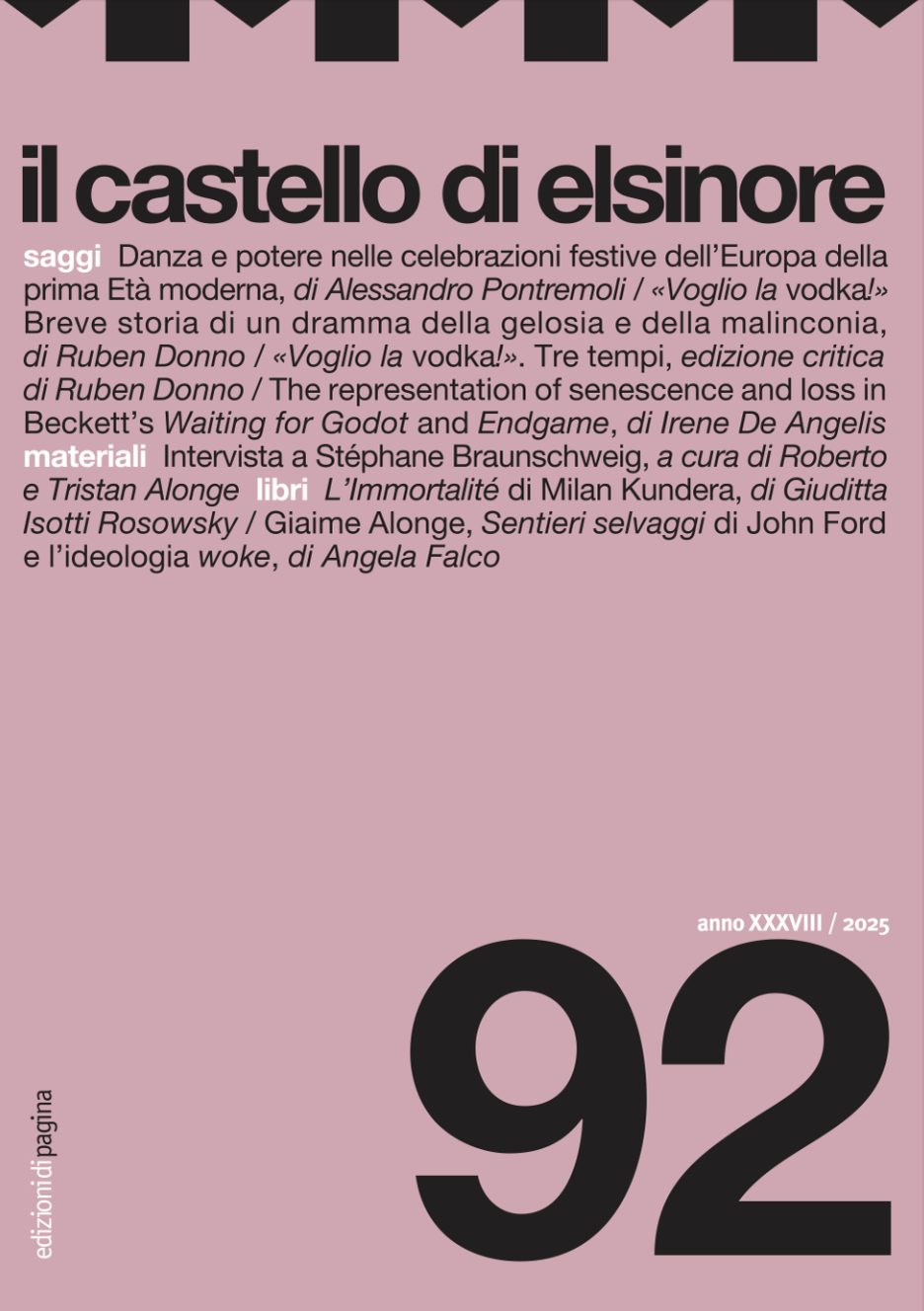Copyright (c) 2025 Irene De Angelis

This work is licensed under a Creative Commons Attribution 4.0 International License.
Abstract
Samuel Beckett’s plays Waiting for Godot and Endgame were both published after the Second World War, in a period dominated by the model of the pièce-bien-faite. Drawing fruitful inspiration from Jean-Paul Sartre and the avant-gardes (Genêt, Adamov, Ionesco), Beckett offers an unconventional form of drama, which radically breaks with the past, focusing on the purgatorial condition of those who find themselves in the “nether region” – neither young nor yet dead, suspended in an in-between state characterized by uncertainty and existential greyness. This essay examines how in Waiting for Godot and Endgame Beckett conceives old age as a grey zone, a transitional stage from which it is impossible to escape, as we were all born, to some extent, to endure the pain and infirmities of decline.


